Some Strange Objects Sent into Space
Lego Figurines
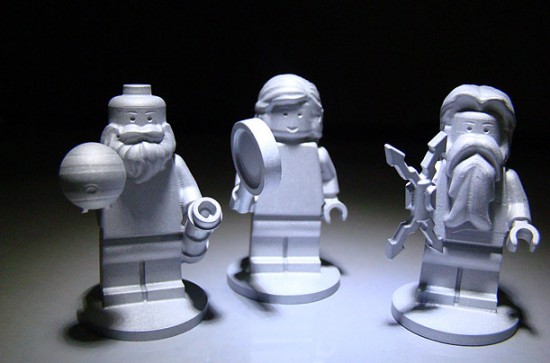
On 05th of August 2011, NASA lunched there Juno spacecraft on Florida, then it will spent five years across the solar system to reach Jupiter. Scientist believe it will reach Jupiter arounf 2016 and after it’s tasks it will crash in to Jupiter surface. This spacecraft is carrying three Lego figurins. This placement is due to partnership between NASA and the LEGO group to inspire children to explore science and technology.
Golden Records
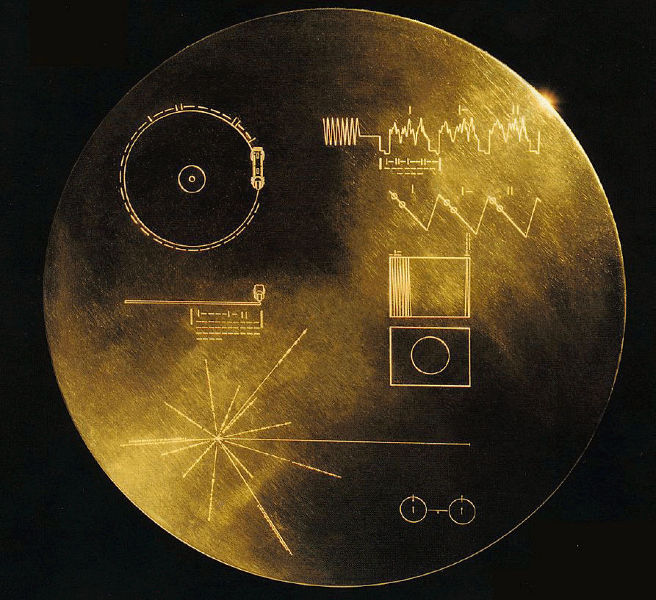
From the beginning of the Voyeger project NASA place special phonograph records in gold-plated copper discs. They contain sounds and images selected to portray the diversity of life and culture on Earth, and are intended for any intelligent extraterrestrial life form, or for future humans, who may find them. The sounds include music from different cultures as well as natural and manmade sounds. For example those contain a kiss between a mother and child, the sounds of the wind, rain and surf etc.
Lead Cargo Tag from Jamestown

Recovered from the bottom of a well by archaeologists researching the colony at Jamestown, Va., this lead tag reading "Yames Towne" was probably once attached to a shipping crate or trunk. NASA placed this artifact, along with two sets of coins commemorating Jamestown, the first permanent English settlement in the Americas, aboard the space shuttle Atlantis for a March 2007 mission.
The Controversial Postal Covers
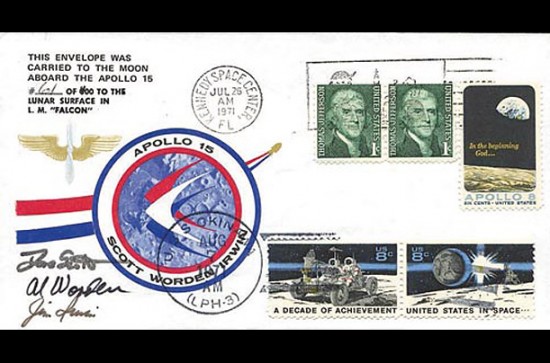
Apollo 15, which launched in 1971, was notable for being the first to use the open-topped moon buggy officially known as the Lunar Roving Vehicle. The mission was also famous for its astronauts, who became involved in controversy upon landing when it became known that they carried unauthorized souvenirs (almost 400 postage-stamp covers) aboard the flight, which they intended to sell upon their return to earth. The incident prompted NASA to take disciplinary action against the astronauts and create new rules about what could be carried into space.
Luke Skywalker's Lightsaber

A prop lightsaber from 1983's Return of the Jedi went up in October 2007 with Discovery shuttle-flight mission STS-120 in honor of the 30th anniversary of the release of 1977's Star Wars. It was escorted to a California airport by a person dressed as Chewbacca, flown to Houston, met there by more Star Wars–costumed folk, displayed for a bit at the Johnson Space Center, flown to Cape Canaveral, blasted off into space and then returned back to earth. The Force was with it, clearly.
Star Trek Ashes
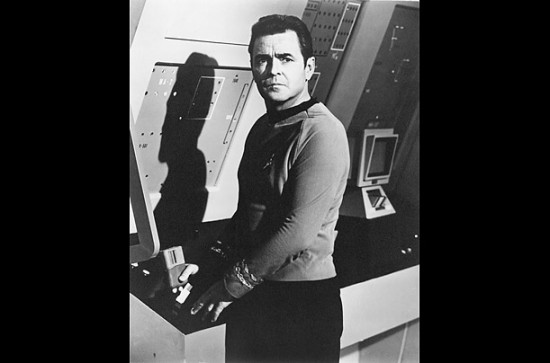
James Doohan, who played Scotty on the original Star Trek television series (and in seven big-screen Star Trek films), had it rough. All he wanted was for his ashes to be shot into space, a process that seems simpler than it actually is. In May 2007, after a brief flight in suborbital space on the back of a private rocket, the ashes crashed down to the New Mexico desert. A year later, as part of another attempt to send his remains into the cosmos, a rocket carrying them exploded over the Pacific Ocean. Doohan was just trying to follow in the footsteps of Star Trek creator Gene Roddenberry, who had his ashes shot into space (alongside those of Timothy Leary's) in 1997 and also had a tiny portion of his remains placed aboard Columbia mission STS-52 in 1992.
Grissom's Dimes
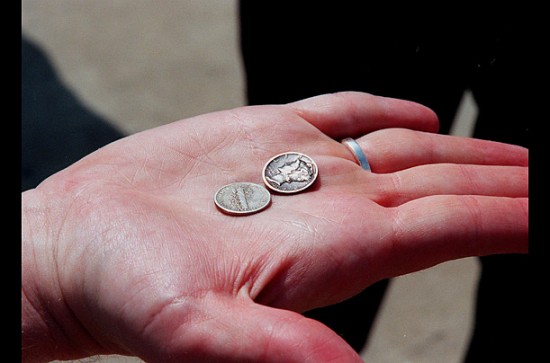
In July 1961, astronaut Gus Grissom piloted the second flight of the Project Mercury program, which was the first human-spaceflight program in the U.S. Grissom, who named the spacecraft the Liberty Bell 7 because of its shape, took along with him "50 dimes, each for the children of friends; three $1 bills; some small models of the capsule; and two sets of pilot's wings" — all things that would be deemed more valuable because they had traveled to space. His 15-min. 37-sec. flight was a success, but it was upon landing in the Atlantic Ocean that he realized those souvenirs were now extra weight. When a hatch to the craft unexpectedly blew off and flooded the Liberty Bell, Grissom had to escape — nearly drowning in his own spacesuit — and leave behind the coins because his rescue helicopter could not carry the water-filled vessel. The Liberty Bell sank, but was recovered 30 years later, along with some of the dimes
Golf Club and Balls
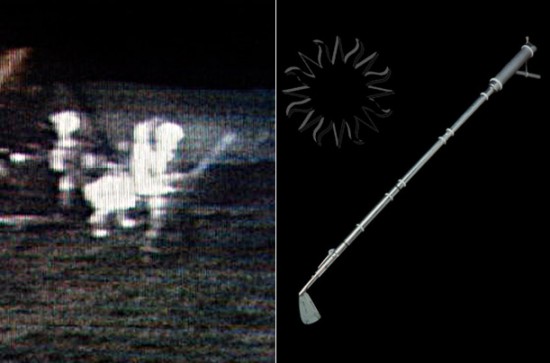
Toward the end of his walk on the moon during the Apollo 14 mission, astronaut Alan Shepard informed NASA's Mission Control that he "happened to have" a six-iron golf club, which he had attached to the handle of a lunar scoop. He also had some balls. After a few unsuccessful swings (because of the bulk of his suit, Shepard could only use one hand), he was able to drive one of the balls "for miles and miles and miles." Upon his return to earth, Shepard donated the club to the U.S. Golf Association. The club pictured above on the right is a replica he gave to the National Air and Space Museum in Washington, D.C.
Family Portrait
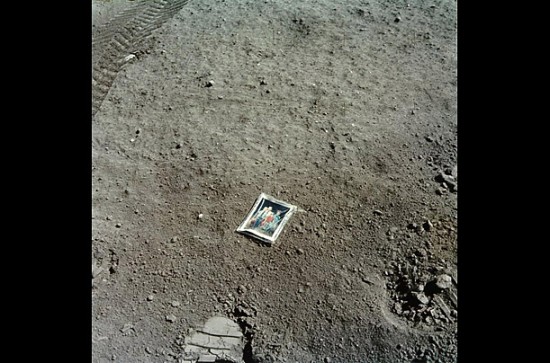
It wasn't enough that Charles Duke became the youngest person ever (and only 1 of 12 total) to walk on the moon when he acted as lunar-module pilot aboard Apollo 16 in 1972. To make more of an imprint on the space rock, Duke decided to leave behind a portrait of his family (Duke, his wife Dotty and their sons Charles and Tom) on the moon's surface. And to be sure that everyone knew about it, Duke took a picture of the photograph with his Hasselblad 70-mm camera. The back of the photo, which is packed in transparent foil, reads: "This is the family of Astronaut Duke from Planet Earth. Landed on the Moon, April 1972."
Toy Story's Buzz Lightyear

Buzz Lightyear, the astronaut action figure of the Toy Story films, went up into space in 2008 with Discovery mission STS-124. It lived at the International Space Station for more than 450 days before landing back on earth on Sept. 11, 2009. It then received a ticker-tape parade at Walt Disney World alongside space icon Buzz Aldrin. (Naturally, Lightyear's presence in space was related to the opening of the Toy Story Mania! attractions at both Disney World and Disneyland.)
Ohhh it's really amazing. :)
ReplyDelete